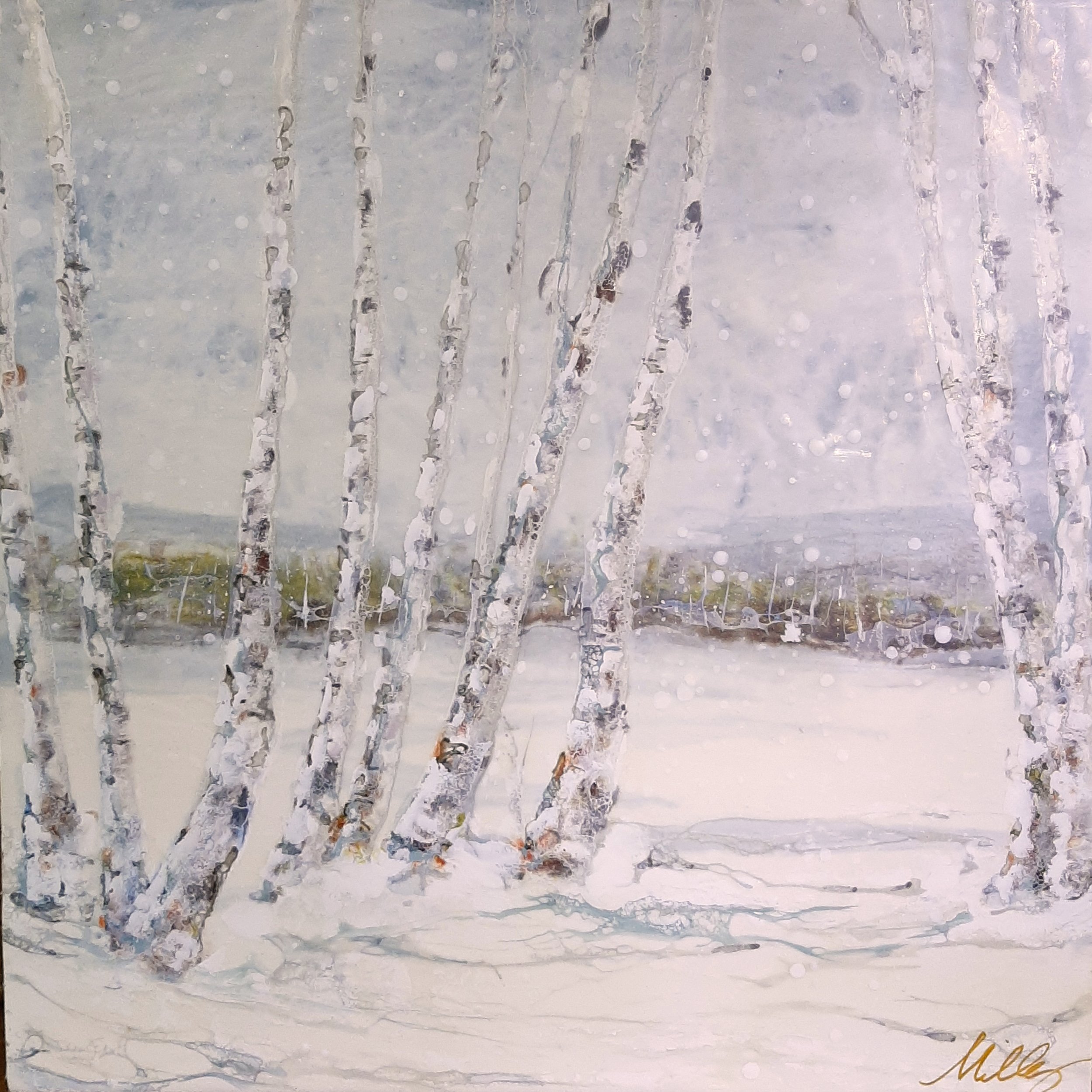Lynne Miller
painting
Lynne Miller is an encaustic artist from Charlotte, NC. Her goal is to allow the viewer to get lost in the details, subtle layers of color, play of light, and delicate veining which is present in her nature inspired paintings. With a torch as her brush, the constantly changing surface of her work develops with up to 30 layers of color and medium. It is the fluid movement of the material while molten and the blooms of color that draw Miller to encaustic painting.
Lynne Miller was raised in Charlotte, NC, and graduated from NCSU school of design. Later she moved to Colorado where she met her husband and began working in various facets of art. After twenty years illustrating trail signs, painting murals for state forests, working as a theme artist for museums, aquariums, and Disney parks, she and her husband Chris, returned to Charlotte in 2006, to raise their three children.
In North Carolina, Miller continued her art work painting murals, wall finishes and even theater sets and props, until discovering her love of encaustic painting. Her work has been featured in several galleries, shows, magazines, charity auctions, and local shops. She is a grant recipient from the Arts and Science Council, as one of Charlotte’s Community Supported Artistsfor 2018.
From the moment she picked up the torch, Lynne was drawn to the natural elements and almost meditative process of encaustic painting. Her goal is to hopefully create a quiet moment in someone’s day when they view her paintings.
Encaustic is a wax based paint (composed of beeswax, demar resin, and natural pigment). It is kept molten at 220 degrees on a heated palette while working. Building many translucent layers of color and texture, each pass is fused with a torch as it is painted. Miller paints on birch panels that give her paintings a rigid surface allowing her to obtain a smooth finished piece.
“Encaustic is versatile. It can be manipulated to each artist’s style whether polished to a high gloss as I prefer or carved, scraped, layered, or collaged.”
Encaustic paintings do not have to be varnished or protected by glass. Beeswax is by nature impervious to moisture. Buffing encaustic paintings with a soft cloth will give a luster that reveals the depth of the layers. Encaustic is a historic painting process that has survived for centuries. It was practiced by Greek artists as far back as the 5th century BC.
How Do I Care for My Encaustic Artwork?
Treat an encaustic painting as you would any fine art. Use care hanging, transporting, or storing a painting. If you care for it as you would any other fine art media, your encaustic work will endure.
1. Consistent Temperature - Hang and store at normal room temperatures. Avoid freezing and extremely hot temperatures; wax will melt at 150°F / 65°C. Normalhome temperatures will not affect your encaustic painting.
*It is not advised to hang encaustic paintings directly above a heat source (fireplace/woodstove/lit candles)*
2. Transportation - When packing encaustic art for transportation, cover the face of the painting with wax paper (I like to use glassine paper). Do not use bubble wrap directly on the front of the painting as it may leave an imprint on the surface.
*Do not leave your encaustic painting in a hot car.*
3. Framing - Encaustic does not need to be protected by glass. A floater frame is an attractive option that also protects the edges of the painting from scratches, dents, and chips.
4. Curing - During the first 12 months, as the wax cures, an encaustic painting may develop a bloom or a slight dulling of the glossy surface. This bloom is a part of the natural curing process and the painting. Bloom is easily removed by simply lightly buffing the surface of the painting using a soft, lint-free white cloth. This is a simple process. Once an encaustic painting has fully cured, it will retain its shine.






